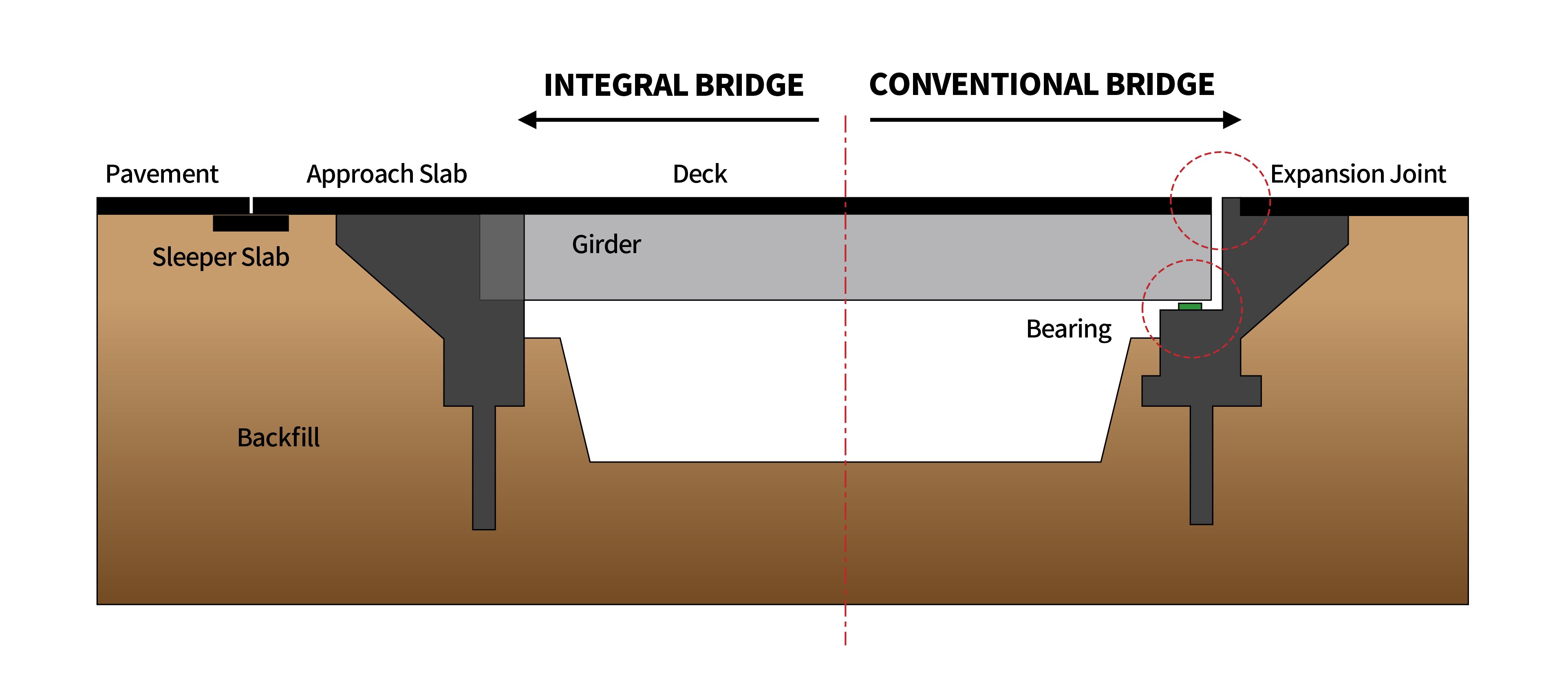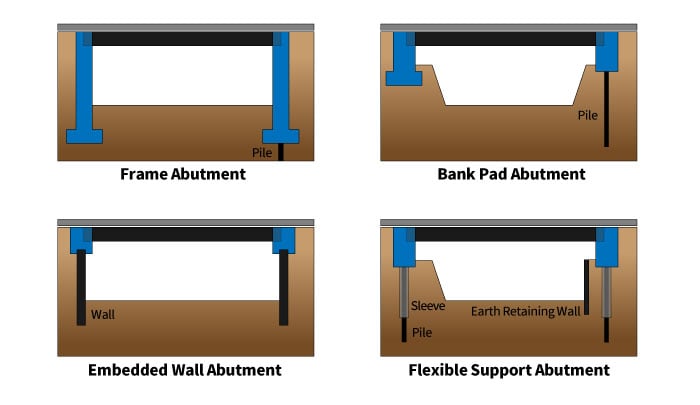1. What is Integral Bridge?
An integral bridge refers to a bridge in which the superstructure and the pier/abutment are integrated out of necessity. The integration between the superstructure and substructure implicates that there is no bearing that transmits force or displacement between the two structures.
Bridges in which the pier and the superstructure are integrated together are often used when the construction method is determined by the required span length. For example, they are structural systems used for long span bridges constructed with the balanced cantilever method (or free cantilever method, FCM). Since the pier and the superstructure are rigidly connected (rigid frame), it is difficult to accurately consider problems arising from external and internal factors in the design stage of integral bridges, but they are still steadily being used because of the advantages of FCM.


/07.%20Integral%20Bridges/Figure/Integral%20Bridge_figure_(1)-1.jpg)

/07.%20Integral%20Bridges/Figure/Integral%20Bridge_figure_(3)-1.jpg)
/07.%20Integral%20Bridges/Figure/Integral%20Bridge_main-1.jpeg)

/07.%20Integral%20Bridges/Figure/Integral%20Bridge_figure_(6)-1.jpg)
/07.%20Integral%20Bridges/Figure/Integral%20Bridge_figure_(7).jpg)


